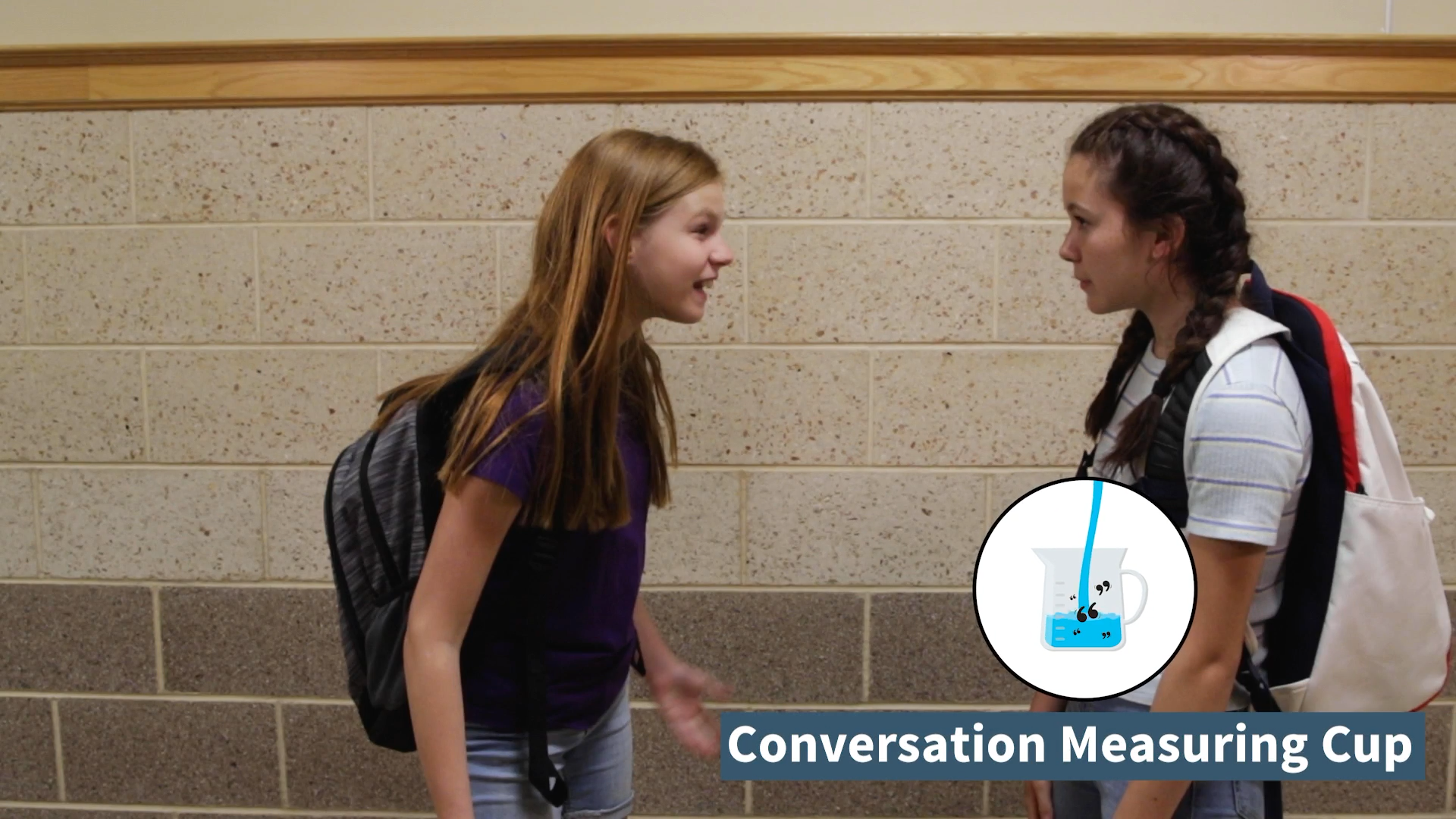
Introduction
Welcome, educators! In this blog post, we will explore an essential social skill: the Conversation Measuring Cup. This skill helps students understand how much to talk during conversations, ensuring they don’t say too much or too little. By teaching students to recognize cues from greetings and questions, we can empower them to engage in more balanced and meaningful conversations.
No-Prep Activity: Two Sides
“Two Sides” is a fun, no-prep activity designed to help students practice using the Conversation Measuring Cup. Here’s how it works:
- Divide students into pairs or small groups.
- Ask students to create two different scenarios where people are having a conversation. One scenario should involve a general greeting (e.g., “What’s up?”), while the other should involve a specific question (e.g., “What did you do this weekend?”).
- Have each pair or group act out both scenarios, demonstrating how much to talk in each situation using the Conversation Measuring Cup.
- After each performance, ask the audience to provide feedback on whether the performers used the Conversation Measuring Cup effectively.
This activity encourages students to practice identifying conversation cues and adjusting their talking turns accordingly. It also provides a safe and engaging environment for students to explore various conversation styles.
Discussion Questions
Stimulate further discussions on the Conversation Measuring Cup with these questions:
- Why is it important to consider how much we talk during a conversation?
- What are some examples of greetings or questions that require a short response? What about those that require a longer response?
- How can we use body language and tone of voice to gauge whether someone wants to continue the conversation?
- What are some challenges you’ve faced in determining how much to talk during a conversation? How can the Conversation Measuring Cup help you overcome these challenges?
- How can using the Conversation Measuring Cup improve our relationships with others?
Related Skills
The Conversation Measuring Cup is just one of many social-emotional learning skills that can help students develop better communication and interpersonal relationships. Here are some other related skills to consider teaching:
- Active listening
- Empathy
- Nonverbal communication
- Assertiveness
- Conflict resolution
Next Steps
Ready to dive deeper into the Conversation Measuring Cup and other essential social-emotional learning skills? Sign up for free sample materials at Everyday Speech, where you’ll find a wealth of resources designed to help educators like you support students’ social-emotional development.

